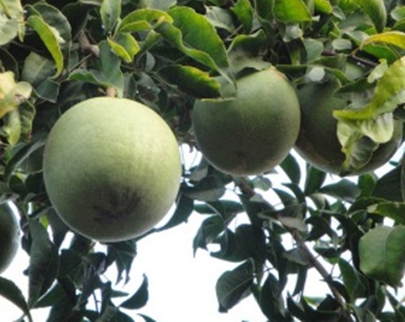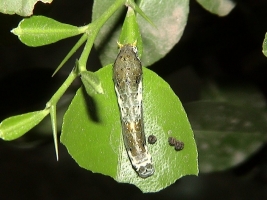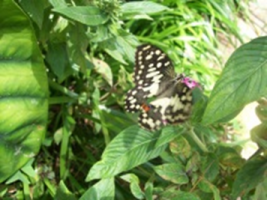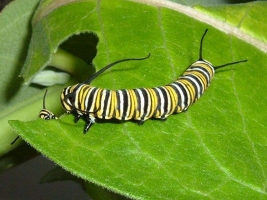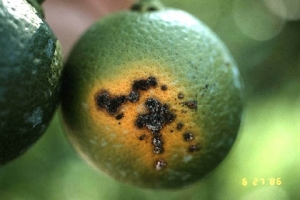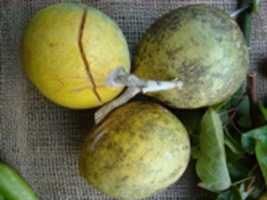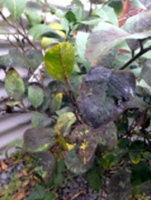Narendra bael varieties are developed by Narendra Dev University of Agriculture and Technology, Faizabad, Uttar Pradesh
Narendra Bael (NB) 1 and Narendra Bael (NB) 2 are most useful and good yielding variety.
Narendra Bael (NB)-5: - Fruit size is medium having weight of about 1kg. The surface is smooth with round shape, having low mucilage and soft flesh with excellent taste.
Narendra Bael (NB)-6: - Fruit size is medium with about 600g of weight. The surface is round smooth having soft flesh with low mucilage content. They are mild acidic and good in taste.
Narendra Bael (NB)-7:- Fruit size is very large, flattened round greenish grey in color.
Narendra Bael (NB)-9: - Fruits of this variety are large in size, having oblong shape with low fibre and seed content.
Narendra Bael (NB)-16:- Prolific bearing, fruits are elliptical round in size having yellow pulp with low fibre content.
Narendra Bael (NB)-17:- Prolific bearer, fruits are average in size with low fibre content;
CISH varieties are developed by Central Institute of Sub-tropical Horticulture, Lucknow, Uttar Pradesh.
CISH B-1: - It is a mid-season variety which matures in April-May. The fruits of this variety are oval-oblong in shape. The fruits are average in size having weight of 1.0kg and are the pulp is dark yellow in color with good flavoring taste. When tree matures it has 50-80kg of weight.
CISH B-2: - It is a dwarf variety and moderately spread. The fruits are oblong-oval in shape and are average in size having 1.80-2.70kg of weight. The pulp is orange yellow in color with good taste. They have low fiber and seed content. The tree at maturity bears upto 60-90kg weight.
Goma Yashi:- Developed by Central Horticultural Experiment Station, Godhra, Gujarat. Trees are dwarf, spineless, prolific bearer and have early maturity. Fruits are bigger in size and yellowish green in color.
Pant Aparna, Pant Shivani, Pant Sujata, Pant Urvashi are developed by G.B. Pant university of Agriculture and Technology, Pantnagar, uttarakhand.
Pant Aparna: - Its trees are dwarf with drooping flowers, almost thornless, precocious and heavy bearer. The leaves are large, dark green and pear shaped. Fruits are globose in shape with average weight 1.0 kg.
Pant Shivani: - Found in early mid-season. Trees are tall, vigorous, dense, upright growth, precocious and heavy bearer. The weight of fruit ranges from 2 to 2.5 kg
Pant Sujata: - Trees are medium dwarf with drooping and spreading foliage, dense, precocious and heavy bearer. Fruit weight varied from 1 to 1.5 kg
Pusa Urvashi: - It is mid-season variety. Trees are tall, vigorous, dense, upright growth, precocious and heavy bearer. Fruits are ovoid, oblong. The fruit weight ranges from 1.5 to 2.5 kg.

